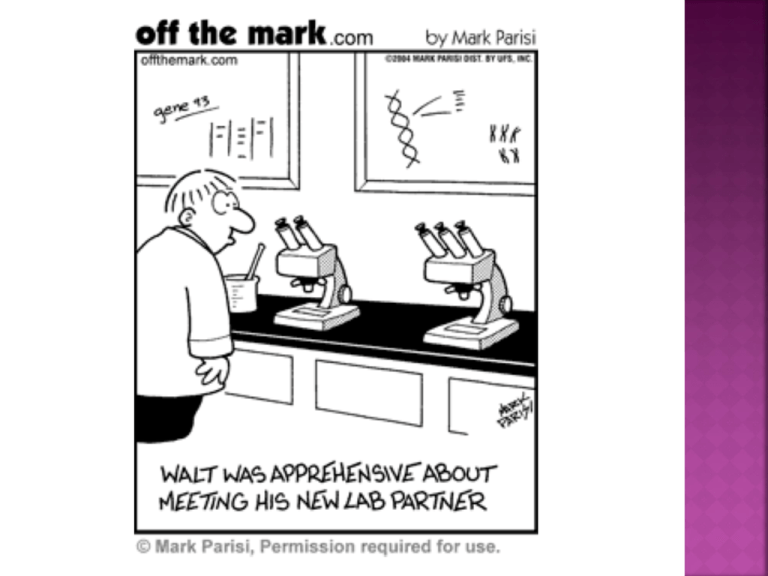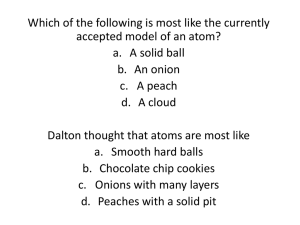PowerPoint
advertisement

Life’s Chemical Basis Matter—anything space Solid Liquid Gas that has mass and takes up Element—unit of matter than cannot be broken down further by ordinary chemical reactions 92 naturally occurring elements 98% of weight of any living thing is made up of 6 Carbon Hydrogen Oxygen Nitrogen Phosphorous Sulfur Atom—smallest indivisible unit of an element Molecule—multiple atoms of the same element bonded together Compound—multiple atoms of different elements bonded together Three subatomic particles Protons Neutrons Electrons Orbit in “shells” K Shell—2 electrons L Shell—8 electrons M Shell—18 electrons Atomic Number=Protons Atomic Mass=Protons + Neutrons Elements in their natural state have neutral charge Positive charge (protons) equals negative charge (electrons) Change in the number of neutrons Does not affect charge Carbon-14 Atomic Mass = 14 (6 Protons + 8 Neutrons) Radioisotopes in medical diagnosis Change in the number of electrons Affects charge Anion—negative More electrons than protons Cation—positive charge charge More protons than electrons Ionic Covalent Hydrogen Formed between ions Electrons transfer from one atom to another Opposite charges attract and hold atoms Usually inorganic (acids, bases, salts, etc.) Atoms share electrons Happens when both have room Usually organic (proteins, carbohydrates, etc.) Bond between covalently bonded hydrogen atom & atom in different molecule or different location. Individually weak, but collectively strong. Biologically important Makes up 70-90% of living things Unique properties Polar molecule (slight positive & negative charge) Can easily dissolve other polar molecules Hydrophilic Hydrophobic “universal solvent” Cell membranes Temperature stabilizing Keeps cell processes from generating too much heat Evaporation Ice helps insulate “Stick together” Adhesion—water sticks to itself Cohesion—water sticks to other polar molecules Due to polarity & hydrogen bonds pH scale 0-14 Based on H+ & OH- molecules Greater H+, lower the pH Each unit is 10-fold change going from pH 6 to 5 increases H+ by 10 times Acids Donates H+ pH less than 7 Bases Accepts H+ Releases OHpH greater than 7 Neutrals Release equal numbers of H+ and OHpH 7.0 Buffers Biological substances that help regulate pH Release or absorb H+ to keep pH unchanged Ex.—Carbonic Acid, Bicarbonate regulate blood H2CO3 + OH- HCO3- + H20 HCO3- + H+ H2CO3




